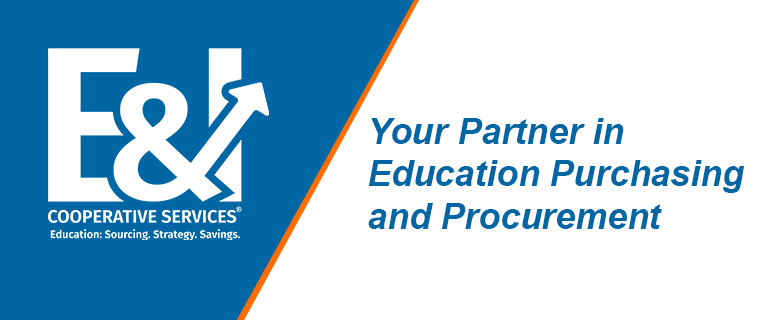Mastering Technology Procurement: Best Practices for Buyers at Educational Institutions
The rate at which technology is embedded in academic institutions is incredible, and the change has happened quickly.
While colleges and universities have typically led the way, local school districts are also investing heavily. Since 2020, EdTech use in K–12 schools has increased by 99%.
Staying on top of evolving tech, however, is not easy. 45% of procurement leaders surveyed said it’s one of their institution’s biggest challenges. The high rate of change, especially in AI-embedded products, makes it difficult to source the best tech. So, defining exactly what is tech procurement and how to source the best products at the lowest cost is a big job.
Done well, technology investments will align with institutional goals, support compliance requirements, and provide long-term value. Done poorly, it can lead to inefficiencies, budget overruns, and expensive mistakes.
Why Technology Procurement Is Different in Education
Unlike the private sector, where speed and agility often take precedence, education buyers must navigate complex stakeholder ecosystems. Technology purchases typically require collaboration among IT, academic departments, administration, finance, and procurement, and each has its priorities.
At the same time, institutions must comply with public accountability standards, competitive bidding requirements, and data privacy laws. All of this occurs within a limited budget cycle that may not always align with evolving technology trends.
And these trends are changing fast.
“Fully half (50%) of institutions are increasing access to AI tools, 38% are adapting generative AI models for internal use, and 37% are funding faculty, staff, or student licenses for AI-powered tools.” — Educause research on AI in higher ed
This explosion in AI-related solutions is reshaping the technology procurement landscape. What was once a relatively stable marketplace of learning platforms and administrative systems has become a fast-moving environment filled with evolving features, embedded AI, and suppliers who are pivoting to provide cutting-edge solutions.
All of this makes the education procurement process more challenging.
Technology Procurement Best Practices for Academic Institutions
To successfully manage buying cycles, procurement teams can employ a series of
technology procurement best practices.
Engage Stakeholders Early
Procurement teams must work closely with IT leaders, faculty, administrators, and student services to understand the real needs before considering any specific suppliers. You need the right solution that works across stakeholders to get buy-in and drive long-term value.
Build a Long-Term Vision
A smart tech investment goes beyond fulfilling today’s needs and focuses on where your institution is going. Asking the right questions can help:
- Will this tool scale to support more users?
- Can it integrate with future systems or analytics platforms?
- Is the supplier stable and forward-thinking?
- What does their future product development roadmap look like?
Evaluating technology for long-term value ensures you avoid short-term fixes that become tomorrow’s headaches. This is especially important in areas like AI, where capabilities and use cases continue to evolve rapidly.
Consider Total Cost of Ownership (TCO)
The sticker price of a tool rarely tells the full story. TCO includes implementation, customization, training, support, renewal, and eventual replacement or migration costs.
Ask suppliers for full pricing transparency and create financial models that account for multi-year costs. A slightly more expensive solution with better support and lower maintenance could yield stronger ROI over time.
Use a Formal Evaluation Framework
Before comparing vendors, develop a consistent rubric to assess:
- Alignment with academic and operational goals
- Integration with your existing tech stack
- Accessibility and compliance
- Cybersecurity protocols
- Training and support options
- Vendor reputation and stability
- Scalability and mobility
When possible, allow for sandbox testing or pilot programs to evaluate usability and performance in a real environment.
Manage Risk Through Compliance and Contract Strategy
Education buyers must always make sure that technology solutions meet institutional risk and compliance requirements. This includes data governance, privacy laws, accessibility standards, and uptime/service level guarantees.
Contract terms should define ownership of student data, exit provisions, uptime expectations, and vendor obligations during upgrades or outages. Don’t overlook the importance of service level agreements (SLAs) and clear escalation paths for support.
Streamline Where Possible
Many institutions face tool sprawl. It’s a common scenario where resources have been deployed for short-term projects or one-time uses and become part of the tech stack. Legacy systems often linger, even if they don’t integrate well with new resources.
A more centralized approach, with integrated platforms and consolidated purchasing, can reduce redundancies and costs while improving user experience. Creating a tech roadmap and procurement calendar helps avoid reactive purchasing and supports a more coordinated strategy across departments.
Cooperative Purchasing: A Smarter Path to Tech Procurement
With thousands of vendors and fast-evolving technologies to consider, cooperative purchasing offers strategic advantages.
E&I Cooperative Services empowers education institutions to access pre-vetted contracts with high-performing suppliers, saving time and reducing procurement risk. These contracts meet public procurement standards and streamline the purchasing process by eliminating the need for institutions to conduct their own RFPs, while still ensuring full compliance.
Cooperative agreements also provide access to pricing that reflects aggregated demand, delivering volume discounts that individual academic institutions can rarely (if ever) achieve. Because E&I focuses exclusively on the education sector, we can negotiate terms that address the unique needs of academic institutions.
Perhaps most importantly, E&I’s category specialists and experienced procurement experts can help you stay ahead of the curve by providing insight into emerging technology and helping you make smarter investments faster.
Ready to secure the contracts you need for every technology challenge? Explore E&I’s
education-focused technology cooperative contracts, or
apply for membership to support smarter technology adoption.












